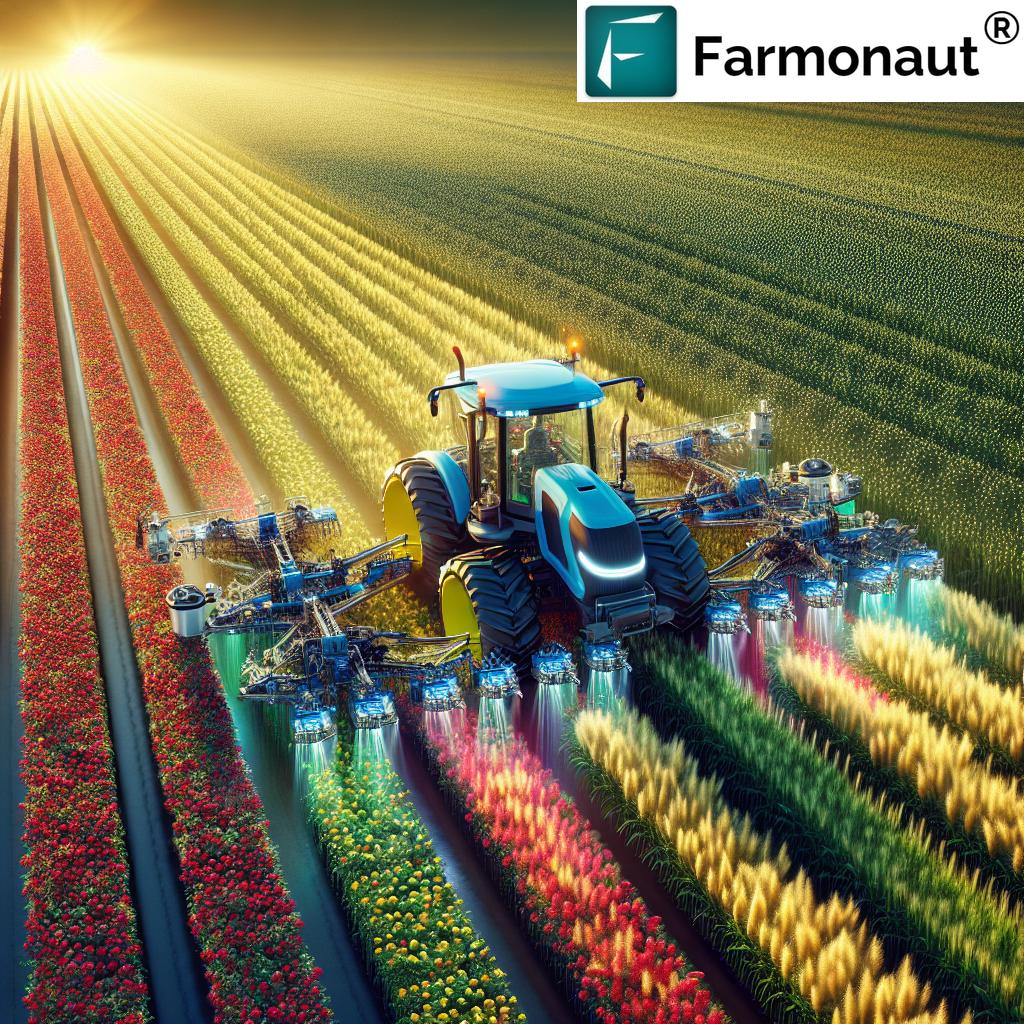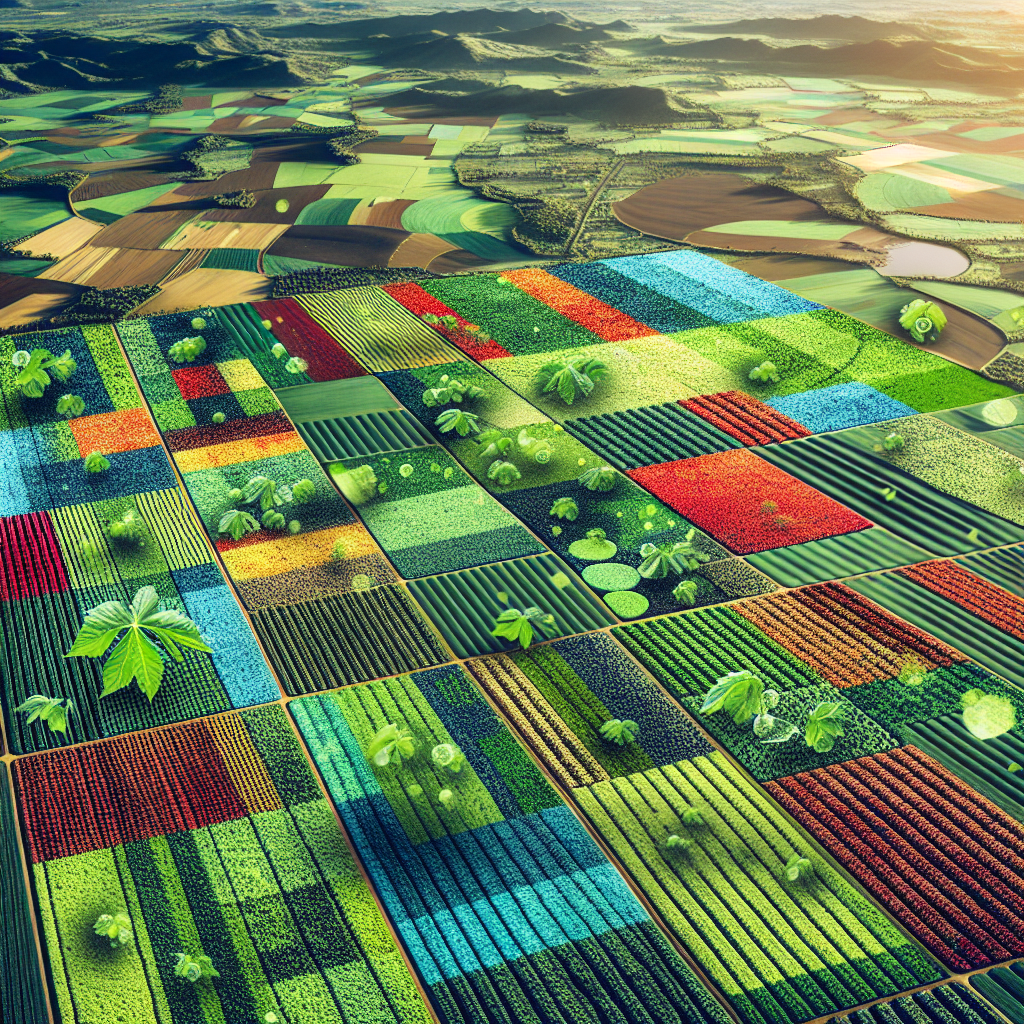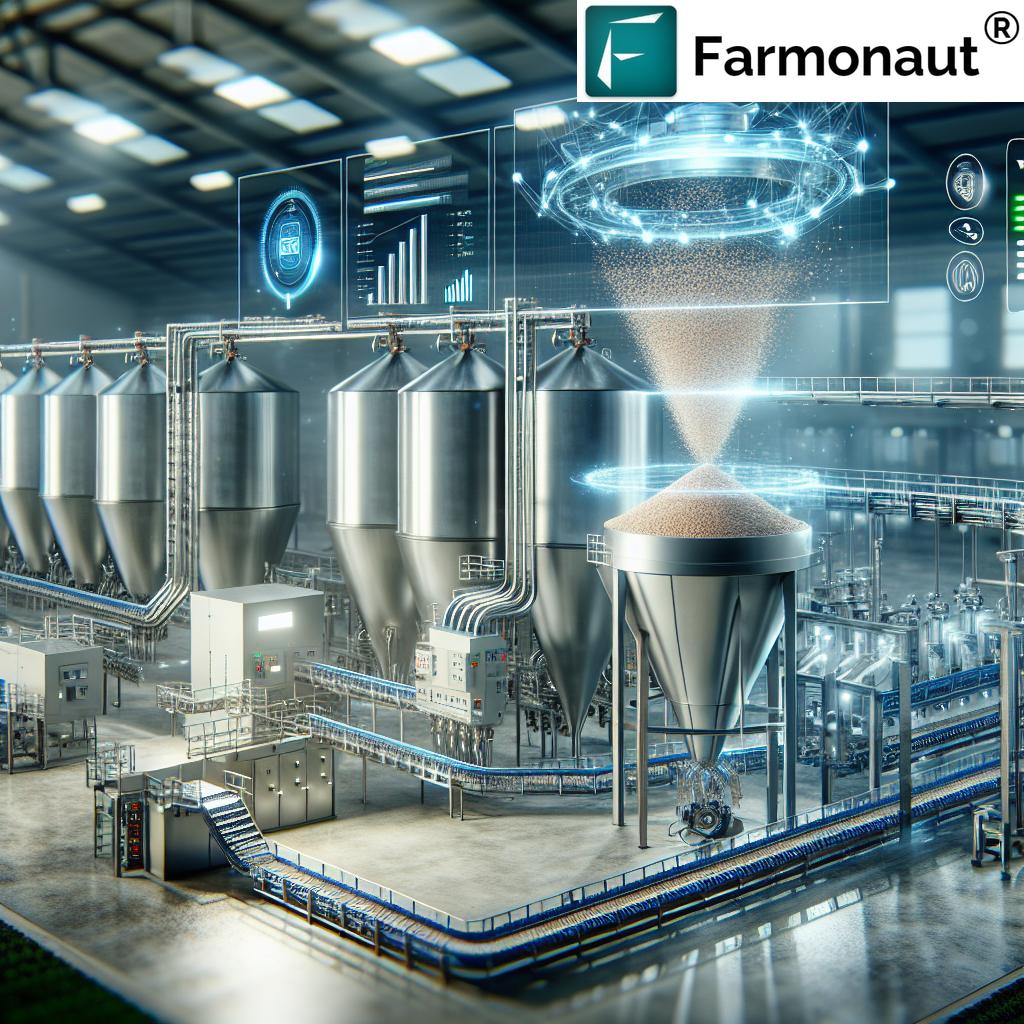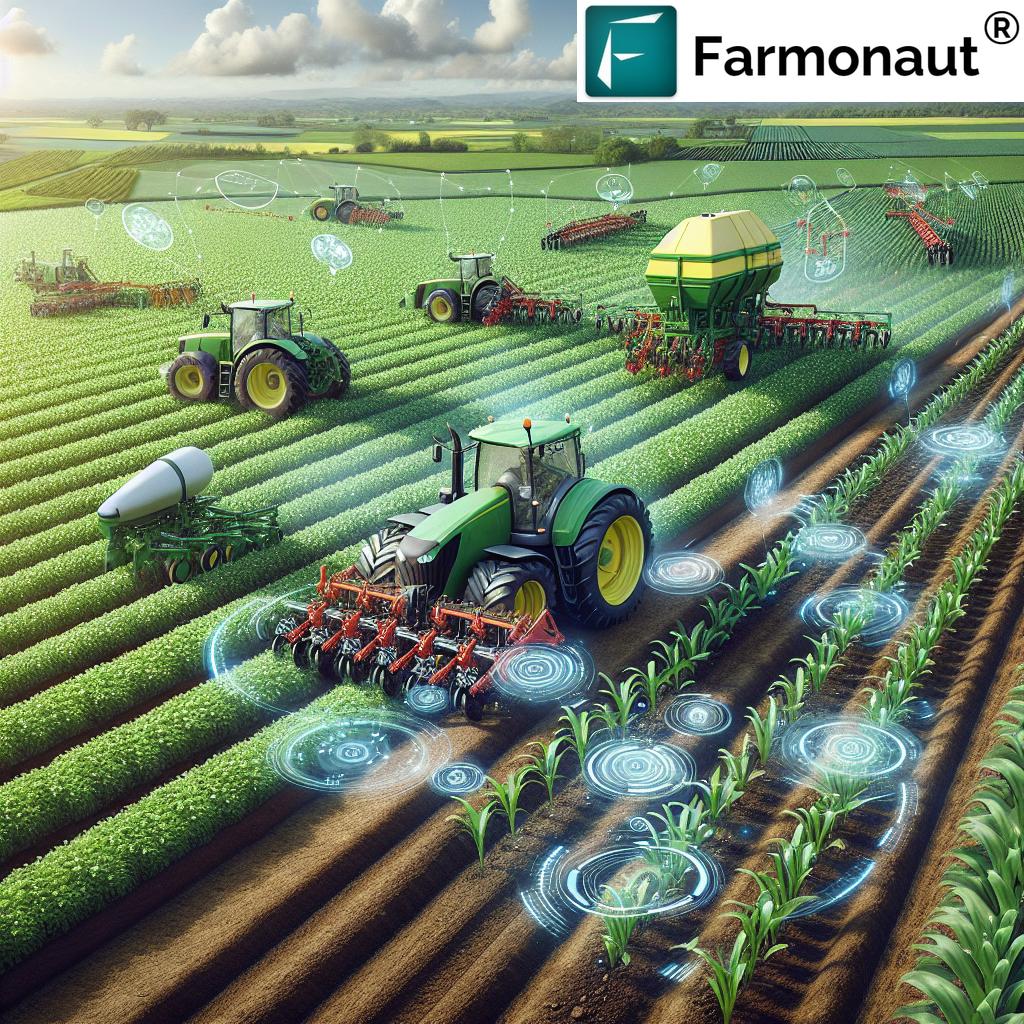Autonomous Tractors: 7 Shocking Ways They’re Changing Farming
“Autonomous tractors can reduce fuel consumption by up to 20% compared to traditional tractors.”
Introduction: How Are Autonomous Tractors Changing Farming?
In a fast-evolving agricultural landscape, autonomous tractors are at the forefront of a technological revolution. No longer limited by human operators, today’s advanced farming machines—integrating GPS, LiDAR, radar, AI sensors, and machine learning algorithms—are transforming how we perform essential farming tasks such as planting, tilling, and harvesting. These remarkable innovations are designed not only to maximize efficiency and precision but also to advance sustainability through reduced input waste and lower environmental impact.
As stewards of both technology and nature, we recognize the incredible potential of integrating autonomous farming solutions and precision agriculture technology into daily practice. This comprehensive exploration demonstrates the 7 shocking ways autonomous tractors are revolutionizing farming—ushering in a new era where AI powered agricultural equipment delivers unmatched results on fields worldwide.
Technological Foundations of Autonomous Tractors
At the core of the autonomous tractor revolution are sophisticated navigation and sensor systems that push the boundaries of what’s possible in agriculture. While traditional tractors depend heavily on experienced operators, autonomous tractors rely on a complex mesh of hardware and software, making them capable of navigating fields, recognizing obstacles such as rocks or animals, and adjusting to variable field conditions—all without direct human intervention.
Key Technologies Driving Efficiency and Precision
- Global Positioning System (GPS): Enables precise mapping of agricultural fields and accurate tractor positioning, which is vital for optimal planting, tilling, and harvesting.
- LiDAR (Light Detection and Ranging): Offers real-time scanning and obstacle detection by measuring distances with laser pulses—fundamental to safe, autonomous navigation.
- Cameras and Radar Sensors: Facilitate object recognition, path planning, and field monitoring by capturing high-resolution data for analysis.
- Artificial Intelligence (AI) Algorithms: Process sensor data and make immediate decisions—adjusting speed, changing directions, and managing complex field operations based on dynamic farming conditions.
- Advanced Tractor Navigation Systems: Utilize a combination of GPS, inertial measurement, and AI to follow precise paths across changing landscapes with unmatched accuracy.
The real game changer is the integration of these technologies. By combining GPS, LiDAR, camera, and radar data with machine learning based analytics, autonomous tractors can outperform human-operated models in both performance and sustainability. This marks a pivotal shift toward data-driven, precision agriculture practices.
Comparison Table: Traditional vs Autonomous Tractors – Key Performance Metrics
| Feature/Metric | Traditional Tractor (Estimated Values) | Autonomous Tractor (Estimated Values) | Impact |
|---|---|---|---|
| Fuel Efficiency (liters/hectare) | 22 | 18 | Up to 20% reduction in fuel consumption with autonomous tractors. |
| Operating Hours per Day | 8 | 16-24 | Continuous operation enables higher productivity and greater efficiency. |
| Labor Requirement | 1 skilled operator per tractor | 0 direct operator needed | Alleviates skilled labor shortages and reduces costs. |
| Precision Level | 75-80% | Up to 99% | Significant accuracy boost in planting, pesticide, and fertilizer application. |
| Maintenance Frequency | Every 250 hours | Every 400 hours (predictive diagnostics) | Remote diagnostics reduce downtime and optimize maintenance schedules. |
| Average Downtime | 10-15% | 5-7% | Higher availability improves field operations throughput. |
| Environmental Impact (CO2 emissions) | Higher per hectare | Up to 25% reduction | Advances sustainable agriculture and reduces carbon footprint. |
7 Shocking Ways Autonomous Tractors Are Revolutionizing Farming
-
1. Unmatched Operational Efficiency and Continuous Field Operations
The most striking advantage of autonomous tractors is their ability to operate 24/7. Freed from the need for human breaks and fatigue limits, these machines can work through the night and in adverse weather, dramatically reducing the time required for field operations. Tasks like planting, tilling, harvesting, and fertilization are completed with unprecedented speed and consistency, allowing us to allocate labor to more strategic functions within our farms.
-
2. Extreme Precision and Data-Driven Agriculture With AI Sensors
Precision agriculture technology empowers autonomous machines to make real-time, intelligent decisions using AI-powered sensor arrays (including satellite, camera, LiDAR, and radar feeds). These systems monitor variables such as soil moisture, vegetation health, and microclimate, facilitating hyper-local application of water, fertilizers, and pesticides. The result is less waste, higher yields, and improved sustainability—all driven by data-informed actions.
Explore how remote, satellite-based crop health monitoring is making farm management even smarter:
Farmonaut Large-Scale Farm Management Solutions
-
3. Resolving Labor Shortages and Reimagining Workforce Needs
Across the agricultural industry, a chronic shortage of skilled tractor operators has challenged farm productivity. Autonomous systems now handle repetitive, time-consuming tasks, easing the pressure on our labor force and enabling us to reassign human expertise to more technical or managerial roles. This rebalancing improves workflow and supports the future skill requirements of modern agriculture.
-
4. Smart Agriculture Ecosystems and Remote Fleet Management
Leading models such as the AGCO Fendt 1000 Vario offer real-time fleet tracking, remote diagnostics, and system health monitoring via connected ecosystems like the Fuse platform. Field managers can monitor, adjust, and troubleshoot advanced farming machines from afar, drastically cutting unplanned downtime and reducing operational expenditure.
Want even more control over your equipment? Discover satellite-based fleet and resource management:
Farmonaut Fleet Management Tools
-
5. Transparent, Sustainable, and Traceable Supply Chains
By integrating blockchain-based traceability solutions and real-time resource tracking, we are now able to offer full transparency for every input and output on our farms. Autonomous tractors seamlessly feed operational data into these platforms—helping us prove the origin, quality, and environmental impact of our crops, while meeting growing regulatory and consumer demands for sustainable products.
Learn more about traceability:
Farmonaut Blockchain Product Traceability
-
6. Maximizing Environmental Sustainability With Smart Resource Use
The integration of AI-powered agricultural equipment delivers a step change in reducing the overall environmental footprint of crop production. From precision application of agrochemicals to optimized water usage and minimized fuel emissions, these innovations advance climate-smart agriculture and enable us to meet stricter guidelines for carbon footprinting and sustainable resource management.
Interested in tracking your environmental impact? Explore:
Farmonaut Carbon Footprinting Solution. -
7. Lowering Costs and Unlocking New Financing With Data-Driven Automation
By automating key operations, we reduce input waste, maintenance expenses, and labor outlays. Additionally, satellite-backed verification for crop insurance and loan applications is increasingly streamlined through smart farming technologies and digital records from autonomous equipment, improving financing access and transparency.
Find out more about modern agri-financing:
Farmonaut Crop Loan and Insurance Services.
“AI-powered tractors increase planting accuracy by 90%, revolutionizing precision agriculture.”
Leading Autonomous Tractor Manufacturers and Models
A host of industry giants are at the vanguard of the autonomous tractor movement, offering trailblazing models packed with the latest navigation systems, obstacle detection sensors, and AI hardware to set new benchmarks in the industry.
1. John Deere 8R 410
- Introduced: 2021
- Key Features: Six pairs of stereo cameras for 360-degree vision, advanced obstacle detection, and AutoPath app for precise field path planning.
- Horsepower: Ranges from 177 to 405
- Pricing: $500,000 – $800,000
2. CNH Industrial New Holland T7.315
- Launched: 2020
- Key Features: LiDAR and radar object scanning for continuous field monitoring, IntelliTurn system for automated end-of-row turns.
- Horsepower: 315
3. AGCO Fendt 1000 Vario
- Equipped with: AutoGuide for hands-free navigation and Fuse smart farming ecosystem for remote monitoring and diagnostics.
- Horsepower: Between 112 and 517
These models are not just increasing the productivity of fields; they’re setting new standards for field safety, sustainability, and the integration of AI-powered agricultural equipment into all aspects of crop management.
Benefits of Autonomous Tractors in Modern Agriculture
- Enhanced Efficiency: By operating continuously and optimizing every pass over a field, autonomous tractors improve efficiency and can work in tight planting or harvesting windows. This is critical during peak agricultural seasons when every hour matters.
- Unprecedented Precision: Machine-controlled planting rows, input application, and path following ensure resources like seeds, water, fertilizers, and pesticides are used with maximum accuracy, minimizing wastage and environmental impact.
- Labor Optimization: Autonomous systems handle repetitive and strenuous tasks, freeing up our teams to focus on higher-order operations and innovations in crop management.
- Sustainability Advocacy: With a dramatic reduction in fuel consumption, precision agrochemical application, and resource saving, autonomous tractors are pivotal for sustainable agriculture practices tailored to today’s climate and resource challenges.
- Improved Safety: Advanced obstacle detection technology lowers the risk of accidents, especially in large or remote fields, increasing the peace of mind for farm owners.
Challenges & Considerations in Adopting Autonomous Tractors
-
Initial Capital Investments:
The cost of acquiring autonomous tractors and integrating advanced sensor technology can be significant, potentially posing a barrier for small or medium-scale operations. However, as technology matures and becomes more accessible, these costs are expected to decrease. -
Reliability Under Diverse Agricultural Conditions:
While AI-powered algorithms are making rapid strides, there remain questions about the reliability of autonomous tractors in complex or unpredictable conditions, such as fields with unusual topography, sudden obstacles, or changing weather. -
Regulatory and Legal Hurdles:
Regions differ in their acceptance and regulation of driverless agricultural equipment. Farmers may face challenges related to insurance, liability, and compliance—though proactive regulatory changes are expected to facilitate wider adoption in the near future. -
Technical Skills and Workforce Transition:
The transition to a tech-driven farm environment necessitates new technical expertise among our workforce. Upskilling and reskilling programs will be crucial in bridging this gap.
Farmonaut and Smart Farming Technologies: The Digital Backbone of Precision Agriculture
As we accelerate toward a future dominated by autonomous farming solutions and agricultural automation systems, platforms like Farmonaut offer the foundational support required for maximum impact. By integrating satellite imagery, AI analytics, and blockchain, Farmonaut delivers affordable, scalable, and accessible solutions for every stakeholder:
- Real-Time Crop Health Monitoring: Analyze NDVI, soil moisture, pest threats, and plant health from space—enabling truly data-driven farming decisions across all seasons.
- AI-Powered Advisory: Receive field-specific recommendations tailored to your farm’s unique conditions on your smartphone or web app—maximizing return on every hectare.
- Blockchain-Verified Traceability: Ensure every step in your supply chain is transparent. Product Traceability allows both farmers and buyers to trust the authenticity and quality of goods moving from field to table.
- Fleet, Resource, and Carbon Management: Monitor logistics, optimize vehicle usage, and get real-time carbon emissions tracking with Farmonaut’s Carbon Footprinting and Fleet Management solutions.
- Flexible Access & Integration: Access Farmonaut’s tools on Android, iOS, web, or via API—empowering both individual farmers and corporate agribusinesses.
- Affordable Precision at Scale: Unlike most precision tools demanding expensive hardware, Farmonaut democratizes precision agriculture through cost-effective, satellite-based insights.
For sustainable farm management, try the Farmonaut Crop & Plantation Advisory App today.
The Future of Autonomous Tractors and Precision Agriculture
The future of autonomous tractors leaves little doubt: advanced machine learning, better sensor hardware, and the proliferation of smart farming technologies will make these agricultural automation systems even more cost-effective, reliable, and adaptable.
What’s Next?
- Greater Adaptability: Enhanced AI will allow machines to dynamically adjust strategies as field and weather conditions shift.
- Cost Reductions: Wider adoption and advances in manufacturing will democratize access to small and medium-sized farms globally.
- Bigger Data Loops: Continuous learning from billions of data points will help autonomous tractors become increasingly responsive to local and global addressable challenges—drought, climate change, labor, and more.
- Elevated Sustainability Standards: Stricter carbon accounting and sustainability mandates will fuel adoption, as only autonomous, data-driven operations can consistently meet these benchmarks.
Farmonaut Subscription Plans: Making Precision Agriculture Affordable For All
Farmonaut operates on a flexible subscription-based business model, offering tailored packages for individual farmers, agribusinesses, and large organizations seeking to leverage precision agriculture technology and AI-driven advisory. Here’s a quick look at how you can access Farmonaut’s satellite intelligence, advisory, blockchain, and resource management tools to accompany your autonomous tractor journey:
Farmonaut Crop Plantation & Forest Advisory
FAQs About Autonomous Tractors and Smart Agriculture
What is an autonomous tractor?
An autonomous tractor is a farming vehicle equipped with advanced sensors, GPS, LiDAR, AI-driven navigation, and control systems. It can perform agricultural tasks such as planting, tilling, and harvesting without direct human operation.
How does precision agriculture technology work with autonomous tractors?
Precision agriculture technology uses real-time data from satellites, sensors, and AI systems to guide tractors in applying inputs (water, fertilizers, pesticides) with pinpoint accuracy. This results in less waste, higher yields, and optimized resource usage.
What are the main benefits of adopting autonomous farming solutions?
Key benefits include increased efficiency, improved yield quality, reduced environmental impact, 24/7 operation, and the ability to reallocate labor to higher-value tasks.
Are autonomous tractors suitable for small farms?
While currently more common on large operations due to high initial costs, falling technology prices and solutions like satellite-driven management (without hardware) are making them increasingly accessible for smaller farms too.
How does Farmonaut complement autonomous tractors?
Farmonaut provides satellite data, AI insights, carbon tracking, and resource management—empowering any farm (autonomous or not) to leverage data for improved efficiency, sustainability, and operational intelligence.
Is autonomous tractor technology safe and reliable?
Modern autonomous tractors are built with multiple fail-safes, 360-degree cameras, LiDAR, radar, and AI for object avoidance. While reliability continues to improve, real-world testing in diverse conditions is ongoing, especially for complex field environments.
Conclusion: The Dawn of a New Era in Agriculture
Autonomous tractors are not just a futuristic concept—they are a present-day reality, reshaping the agricultural industry with groundbreaking technologies in AI, sensor hardware, and data analytics. By enabling efficiency, precision, and sustainability on an unprecedented scale, they address key challenges in food production, environmental impact, and labor scarcity.
As we embrace the integration of autonomous farming solutions and precision agriculture technology, platforms like Farmonaut will be vital in providing the digital backbone required for farmers to succeed and innovate. By making precision insights available at everyone’s fingertips, we move collectively toward a future where advanced farming machines and smart advisory systems drive global food security and environmental stewardship.
Transform your farm’s future—combine cutting-edge autonomous tractors with Farmonaut’s satellite-powered, AI-driven platform for optimum productivity, sustainability, and peace of mind.














